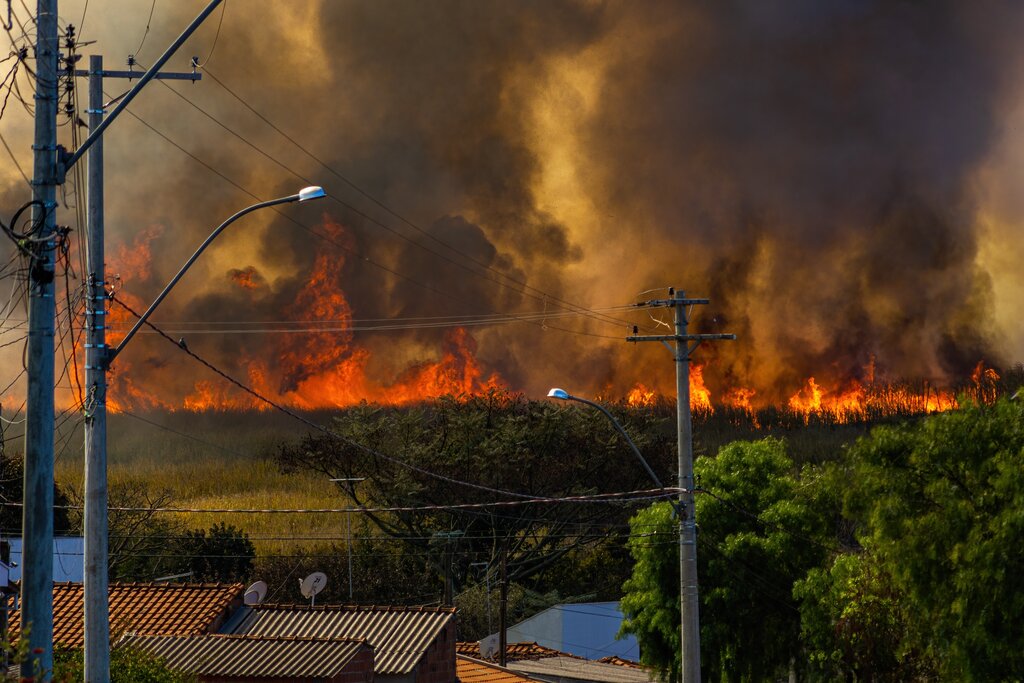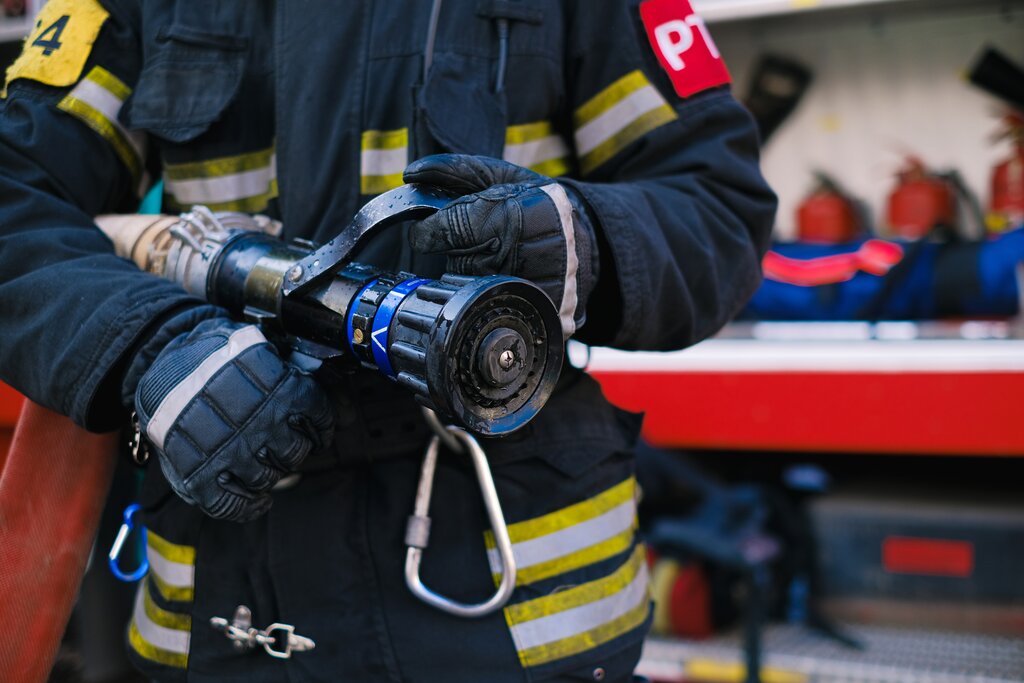Hitting the “Reset” Button on the
Life Cycle of a Forest
On a clear summer day, a New Mexico firefighter hikes down a valley on the southern edge of a canyon. Many of the hillsides — once covered with pine and fir — are empty and brown.
Blackened juniper stumps stick up like twisted hands.
But amid the devastation, the firefighter is pleased to see some ants.
Restorative Powers
In the harrowing aftermath of a major wildfire, it may be difficult to appreciate the restorative power in the fire itself. Especially when nothing remains to hold the land in place once the rain comes, resulting in flash flooding and mudslides.
But the rain also breathes life back into the remaining landscape, allowing new vegetation to grow in the charred areas. Seeds stored in the forest floor begin to germinate. Some trees begin to sprout branches from basal buds of dead trees.
And some species even rely upon wildfire for propagation. For instance, the seeds of jack pines and lodgepole pines (native to the Yellowstone area) are sealed by a resinous bond which can only be cracked open by the high temperatures associated with wildfire.
How Quickly Does a Forest Recover?
Depending on the severity of the wildfire, a forest may recover quickly. (The low-intensity “prescribed fires” used by forest managers, for example, are intended to add nutrients to the soil and rejuvenate plant life.)
For larger, more destructive wildfires, active efforts to assist recovery are often needed. These could include erosion prevention, as well as establishing vegetation through re-seeding or replanting.
–Article Continues Below–

The natural pattern of recovery after a wildfire is referred to as “ecological succession.” This is the process whereby the land, plants and wildlife move through various ecological stages in order to return to a state of relative stability. It’s like hitting the “reset” button on the life cycle of a forest.
The Stages of Succession
Ephemerals
The first plants to move into the new bare ground after a wildfire are wildflowers or “weeds.” These fast-germinating, leafy herbaceous plants are also known as “forbs” or “ephemerals.” They quickly germinate, grow and produce a new crop of seeds.
Grasses
Next, the grasses move in. Because grasses can withstand summer dry spells, and forbs cannot, they soon begin to replace most of the forbs. The grasses’ root systems allow them to become dormant during extended drought. Forbs, on the other hand, can only survive drought as seeds; they must sprout again whenever rains return. With each repetition of a drought cycle, grasses cover more ground. Eventually, they prevent the forbs from re-establishing themselves.
Pioneer Trees
The next species to appear are called “pioneer trees.” These are scubby, slow-growing trees that are unpalatable to livestock. They’re able to mature at significantly reduced sizes in arid, nutrient-poor soils, under harsh conditions.
Some common pioneer tree species include red cedar, alder, black locust, most pines and larches, yellow poplar and aspen.
Once these trees begin to germinate and establish themselves, the existing grassland begins to recede. Individual trees spread above the grasses and start to shade them out. Before long, the pioneer trees are rampant.
Scub Canopy
As the scrub trees become dominant, their crowns begin to form a thick canopy. In fact, it’s not unusual for a single aggressive species of tree (such as mesquite or juniper) to predominate for years. The grasses underneath are shaded almost entirely out of existence. The scrub canopy lays down a thick layer of needles or leaves to produce mulch and, eventually, soil. By the time they have matured (which can take 40 years or more), the scrub trees have produced a layer of relatively rich, crumbly topsoil under a mulch of forest litter.
With continuous cover, the forest soil will now be shaded and cool, and humidity within the environment is increased.
Climax Forest Begins
With these more hospitable conditions, taller trees and vines begin to move in. They could not have survived in the harsher environment which the scrub trees prefer. But thanks to the enhanced soil and air created by the scrub forest, the taller trees are soon thriving. They’ll eventually shade out the older, shorter, slower-growing scrub.
Once that occurs, then a “climax” forest has begun to form. At this point, the woodland is returning to a steady state of relative stability, and is on its way to becoming a mature forest.
What About the Wildlife?
People are often worried about wildlife during a forest fire. But, according to National Geographic, there’s really little cause for concern. “Once the flames begin, animals don’t just sit there and wait to be overcome. Birds will fly away. Mammals will run. Amphibians and other small creatures will burrow into the ground, hide out in logs, or take cover under rocks. And other animals, including large ones like elk, will take refuge in streams and lakes.”
Interestingly, firefighters don’t usually encounter many animals in fires, but they may spot plenty of invertebrates preceding the flames. “You get overrun by this wave of creepy-crawlies walking ahead of the fire,” an Australian firefighter has observed.
Of course, some individual critters that can’t run fast enough or find adequate shelter will die in the smoke and flames. (Scientists don’t have any good estimates on the number of animals that die in wildfires each year.) But there are no documented cases of fires wiping out entire populations or species.
The First Returnees
After the fire, the first species to return to the scorched areas are wood-boring insects. In fact, a particular species of western beetle is equipped with heat sensors to draw it in from miles away to feast on injured trees.
These same insects play an important role in the recovery process by attracting predator species. Shortly after a fire, armadillos and birds will return to the burned area in search of these insects. The dead or injured trees become nesting houses for dozens of species of birds. Eventually, small mammals (such as chipmunks, squirrels and mice) join them.
The fallen trees make ideal hollowed-out homes for medium-sized animals, such as raccoons and foxes. Once the tender new shoots of vegetation begin to appear in the spring, they quickly attract larger wildlife, particularly deer.
Time Heals
Recovery from large wildfires may require some help. But forests will, in time, heal themselves.
The following time-lapse video clip captures the stunning regrowth of a longleaf pine habitat over the course of two months after a controlled burn:
Sources:
Featured Image: Public Domain








